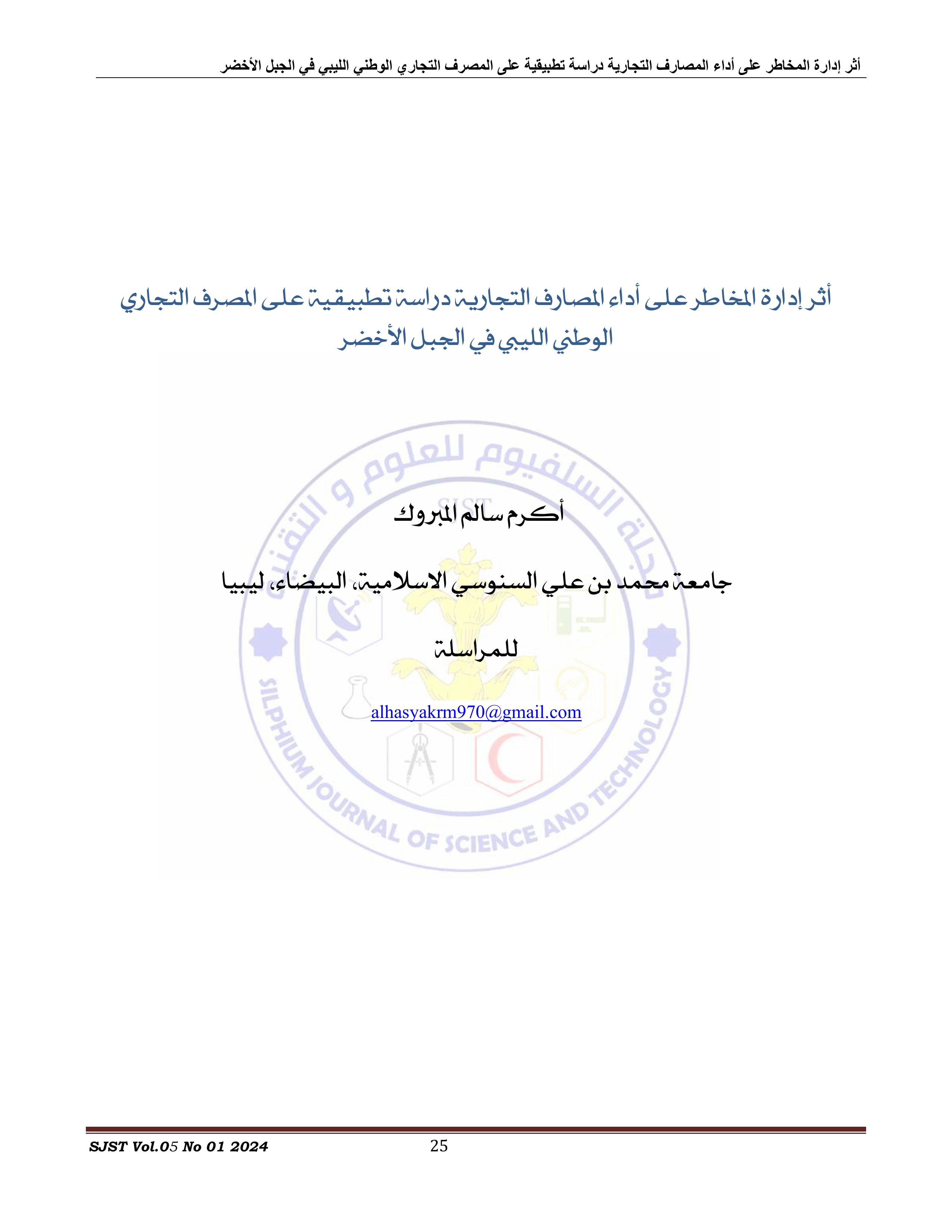The impact of risk management on the performance of commercial banks: An applied study on the Libyan National Commercial Bank in Al-Jabal Al-Akhdar
Keywords:
Risk management, financial risks, non-financial risks, bank performanceAbstract
Abstract
This study aimed to know the impact of risk management on the performance of commercial banks, due to the problems and financial crises witnessed by the financial and banking sectors that led to the insolvency or bankruptcy of many of them, due to rapid technological development and the emergence of new financial instruments. The study was limited to risk management as an independent variable on Four sub-areas: (credit risk management, market risk management, operational risk management, and liquidity risk management), while the dependent variable is the banks’ performance. The study included all branches of the Commercial Bank in Jabal Al Akhdar, numbering 12 branches. As for individuals, senior management, branch managers, their assistants, and department heads Accounting, facilities, and employees working in the branches of the Commercial Bank within the Green Mountain area The number of people who were contacted was 60 employees, and the descriptive analytical approach was used with a set of statistical methods to analyze the data, including the arithmetic mean method, the standard deviation, the Pearson correlation coefficient, the f value, and the coefficient of determination. The researcher designed a set of hypotheses in order to choose the relationship between the study variables. He used The researcher used the questionnaire tool. The researcher presented the questionnaire to three arbitrators who were faculty members specializing in accounting, finance, and statistics. The researcher responded to the opinions of the arbitrators and made the necessary deletions and amendments in light of their suggestions, and thus the questionnaire came out in its final form. Accordingly, it was considered the study tool. Valid to measure what it was designed to do, questionnaires were distributed to members of the study population50 questionnaires were recovered out of 60, meaning a recovery rate of 83%. After examining the questionnaires, none of them were excluded due to the fulfillment of the conditions required to answer the questionnaire. Thus, the number of questionnaires subject to study is 50. The study reached a number of results, the most important of which is that there is a positive relationship between the Credit risk, market risk management, operational risk management, liquidity risk management and the performance of commercial banks. The researcher made a number of recommendations, most notably the commitment to developing specific mechanisms and plans to manage and confront market risks, and the commitment to measure, follow up and monitor liquidity risks periodically.


